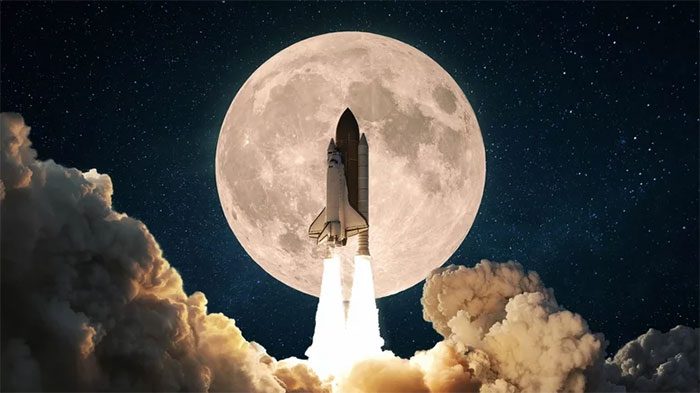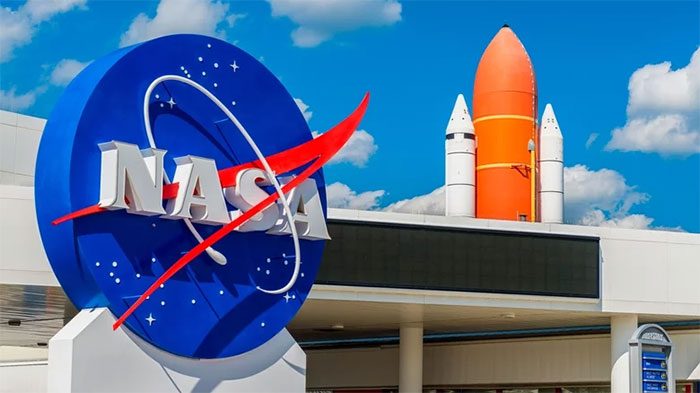The Artemis program by NASA aims to bring humanity back to the Moon and enable humans to set foot on Mars for the first time.
According to NASA, this program will utilize new technologies to study the lunar surface and allow astronauts to have a long-term presence on the Moon. This ambitious mission could teach us much more about the Moon and Mars than we have ever known before, including opportunities to assist humanity in the long run. But with such a beautiful vision, how much will this program actually cost to implement?
Recently, a NASA auditor appeared before the U.S. Congress to discuss the Artemis program. Speaking to lawmakers during a meeting of the House Subcommittee on Space and Aeronautics, NASA Inspector General Paul Martin stated: “We find that the first four Artemis missions will cost $4.1 billion per launch, a price we consider unsustainable.” Moreover, the Artemis program is projected to cost around $93 billion by 2025, according to Space.com.

The Artemis program is a U.S. aerospace project aimed at returning humans to the Moon by 2024. The program is primarily being carried out by the National Aeronautics and Space Administration (NASA), U.S. commercial space companies, in coordination with international partners such as the European Space Agency (ESA), Japan Aerospace Exploration Agency (JAXA), Canadian Space Agency (CSA), and Australian Space Agency (ASA).
Why is space exploration so expensive?
The reasons behind the high costs of NASA’s Artemis program are complex, as there are many factors contributing to the continuously rising expenses. According to a report by NASA’s Office of Inspector General, the largest costs for the Artemis program stem from the development of the exploration systems. This includes the Space Launch System (SLS) and the Orion Crew Capsule, which are the most critical components necessary for the Artemis missions.
According to NASA, the SLS is a heavy-lift launch vehicle that will enable the Orion Crew Capsule to escape Earth’s gravitational pull. Furthermore, this booster will allow NASA to use it for multiple missions. Most importantly, NASA explains that the SLS is the only rocket capable of carrying the payload that Artemis will require.

NASA successfully sent humans to the Moon for the first time through the Apollo program, with a total of six Apollo missions and 12 astronauts landing on the Moon from 1969 to 1972. However, the goal of the Artemis program is not only to return humans but also to maintain a long-term human presence on the Moon while enabling U.S. private companies to explore economic benefits on the lunar surface. The program also aims to lay the groundwork for sending humans to Mars.
Based on NASA’s estimated costs and payloads, Universe Today reports that it will cost $58,000 for each kilogram launched. Contributing factors to the enormous weight of the payload include fuel, components, personnel, and supplies.
Surprisingly, NASA’s Artemis program is not the most expensive endeavor from the space agency. According to The Planetary Society, the U.S. spent about $28 billion to fund the Apollo missions, which is approximately $280 billion today. The Apollo program was not the only project that NASA funded during that time. The agency spent an estimated total of $49.4 billion (equivalent to $482 billion today) from 1960 to 1973.
Although these figures may seem shocking, they are not surprising when compared to other U.S. expenditures. According to the Office of Management and Budget (OMB), NASA received 0.5% of the total $4.8 trillion federal budget for 2021.
According to a study on NASA’s economic impact, the agency generated over $64.3 billion in economic output and supported more than 312,000 jobs nationwide in 2019. Despite the high costs, NASA’s Artemis program could mean further economic growth for the U.S., leading to more jobs, breakthroughs in technology, and new explorations.

Artemis builds on ongoing spacecraft programs including Orion, Lunar Gateway, Commercial Lunar Payload Services, and an undeveloped lander. The Space Launch System (SLS) will serve as the primary launch vehicle for the Orion spacecraft, while commercial spacecraft launch services are planned to be used for launching other components of the program. In August 2021, NASA announced that the lunar module of the program would be the Starship spacecraft. The return of humans to the Moon may be delayed from 2024 to 2028 due to budget constraints from the U.S. Congress.





















































